|
A phrase meaning that territorial expansion of the United States is not only inevitable but divinely ordained. The phrase
was later used by political parties to justify aquisition of California, Oregon Territory, and Alaska.
A. The expansion of the nation made us more powerful as a union. Indians were driven out as a result.
B. Railroads helped the economy grow. The landscape changed rapidly by the clearing of trees and the exploding of mountains
for tunnels.
C. Railroads expanded American industry into the west, therefore affecting economic growth. Indians again suffered from
this growth.
D. Native Americans were forced into reservations. Many tribes perished.
E. African Americans were brought over as slaves by Europeans. Later, slavery was abolished.
F. From the Mexicans we gained California and New Mexico. Mexicans were pushed back behind the Rio Grande as a border.
Enter supporting content here
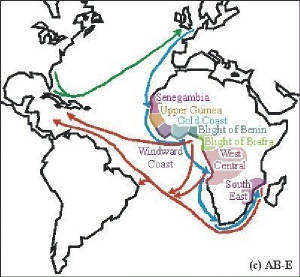
Institution of slavery defined by law was as follows: Their labor or services are obtained through force; their physical beings
are regarded as property of their owner. Their owner could buy, sell, trade, or give as a gift without any concern to personal
or legal objection or restraint.
A. The importance of slavery was free labor obtained by force which created bigger profits.
B. The lives of slaves were affected by separation from loved ones with no freedom. Horrible conditions to live by
C. Slaves resisted by working slowly, pretending to be sick, or burned down plantation buildings and breaking tools.
D. Segregation was still apart of American Society until the 1960's despite the abolition of slavery because, white people
were still racist against blacks.
E. Segregation was used like the "Institution of Slavery" in the way that just like in slavery they were not
free, in segregation they were not free to attend white schools, ride on white buses and so forth.
American lawyer and poet, Francis Scott Key wrote the lyrics to the national anthem. During the War of 1812 he witnessed
the British bombardment of Fort McHenry in the Baltimore Harbor. The sight of the American flag still flying over the fort
at daybreak inspired him to write the poem, "Star-Spangled Banner".

Oh, say can you see, by the dawn's early light,
What so proudly we hailed at the twilight's last gleaming?
Whose broad stripes and bright stars, through the perilous fight,
O'er the ramparts we watched, were so gallantly streaming?
And the rockets' red glare, the bombs bursting in air,
Gave proof through the night that our flag was still there.
O say, does that star-spangled banner yet wave
O'er the land of the free and the home of the brave?
On the shore, dimly seen through the mists of the deep,
Where the foe's haughty host in dread silence reposes,
What is that which the breeze, o'er the towering steep,
As it fitfully blows, half conceals, half discloses?
Now it catches the gleam of the morning's first beam,
In full glory reflected now shines on the stream:
'Tis the star-spangled banner! O long may it wave
O'er the land of the free and the home of the brave.
And where is that band who so vauntingly swore
That the havoc of war and the battle's confusion
A home and a country should leave us no more?
Their blood has wiped out their foul footstep's pollution.
No refuge could save the hireling and slave
From the terror of flight, or the gloom of the grave:
And the star-spangled banner in triumph doth wave
O'er the land of the free and the home of the brave.
Oh! thus be it ever, when freemen shall stand
Between their loved homes and the war's desolation!
Blest with victory and peace, may the heaven-rescued land
Praise the Power that hath made and preserved us a nation.
Then conquer we must, when our cause it is just,
And this be our motto: "In God is our trust."
And the star-spangled banner in triumph shall wave
O'er the land of the free and the home of the brave!
Francis Scott Key (1779 - 1843)
A. The bald eagle was chosen June 20, 1782 as the emblem of the United States of American, because of its long life, great
strength and majestic looks, and also because it was then believed to exist only on this continent.
bald eagle The Eagle, Our National Emblem
On the backs of our gold coins, the silver dollar, the half dollar and the quarter, we see an eagle with outspread
wings.
On the Great Seal of the United States and in many places which are exponents of our nation's authority we see the
same emblem.
The eagle represents freedom. Living as he does on the tops of lofty mountains, amid the solitary grandeur of Nature,
he has unlimited freedom, whether with strong pinions he sweeps into the valleys below, or upward into the boundless spaces
beyond.
It is said the eagle was used as a national emblem because, at one of the first battles of the Revolution (which occurred
early in the morning) the noise of the struggle awoke the sleeping eagles on the heights and they flew from their nests and
circled about over the heads of the fighting men, all the while giving vent to their raucous cries. "They are shrieking
for Freedom," said the patriots.
Thus the eagle, full of the boundless spirit of freedom, living above the valleys, strong and powerful in his might,
has become the national emblem of a country that offers freedom in word and thought and an opportunity for a full and free
expansion into the boundless space of the future. --Maude M. Grant

Great Seal Symbols
A Shield of Thirteen Stripes
Although each of the three Great Seal committees included a shield in its design, the striped shield was first suggested
by Francis Hopkinson, the consultant on the second committee, in 1780. He is the same person who three years earlier had designed
the American Flag.
Hopkinson suggested: "The Shield charged on the Field Azure with 13 diagonal Stripes alternate rouge and argent."
[red and white]
The third committee's consultant, a heraldry expert named William Barton, suggested 13 horizontal stripes. He later
revised Charles Thomson's design, so that the shield's 13 red and white stripes were vertical, beneath a blue Chief (the upper
part of the shield) – which is how we see it today.
The shield design elegantly illustrates the motto E Pluribus Unum:
Out of Many, One.
The Shield is "born on the breast of an American Eagle without any other supporters to denote that the United
States of America ought to rely on their own Virtue."
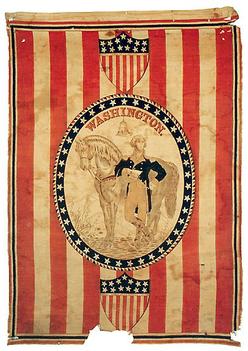
Great Seal Symbols
The Olive Branch
The Power of Peace
The olive branch was first suggested by the second Great Seal committee. On the front of their design:
"a Figure representing Peace bearing an Olive Branch"
Motto: "Bello vel Paci" – For war or for peace
On the reverse side:
"the Figure of Liberty seated in a Chair holding her Staff and Cap" (Their sketch shows her holding an olive
branch.)
Motto: "Virtute perennis" – Everlasting because of virtue
Charles Thomson placed the olive branch in the eagle's right talon. The official Great Seal design specifies:
The American bald Eagle holding in his right talon an Olive branch, and in his left a bundle of thirteen arrows... The
Olive branch and arrows denote the power of peace & war which is exclusively vested in Congress.
To further emphasize the superiority of peace, the eagle faces the olive branch which is in its stronger talon.
The olive leaf carried by the dove back to Noah's Ark must have evoked some very intense emotions, beyond simply "peace."
Imagine – after nearly a year in the Ark – finally getting a sign that the ordeal was almost over, and
that reconciliation with God was possible.
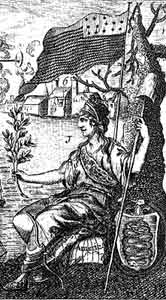
Great Seal Symbols
Bundle of Thirteen Arrows
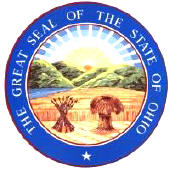
The Power of War
Arrows were first suggested by Francis Hopkinson, the consultant who did most of the work on the second Great Seal committee.
Charles Thomson placed a "bundle of Arrows" in the eagle's left talon, and William Barton specified their number
be thirteen. The final Great Seal design specifies:
The American bald Eagle holding in his right talon an Olive branch, and in his left a bundle of thirteen arrows...
The Olive branch and arrows denote the power of peace & war which is exclusively vested in Congress.
Great Seal Symbols
Thirteen stars forming a Constellation
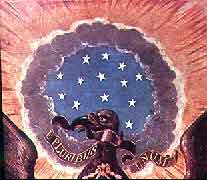
A New Constellation
"The Constellation denotes a new State
taking its place and rank among other sovereign powers."
Great Seal Symbols
A Glory breaking through a cloud
and a Glory surrounding an Eye
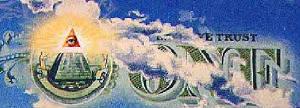
"Glory" is a heraldic term for a circle of rays, an emanation of light – gold or yellow in color –
similar to the halo used by artists to depict angelic beings. It is symbolic of Providence.
Great Seal Symbols
The Pyramid

trength and Duration
On the final design of the Great Seal, it is described as "A Pyramid unfinished," and explained with only a
brief remark: "The Pyramid signifies Strength and Duration."
Great Seal Symbols
The Eye

"A Pyramid unfinished. In the Zenith an Eye in a triangle surrounded with a glory... Over the Eye these words Annuit
Coeptis."
The U.S. State Department translates this Latin motto into:
"It [the eye of providence] has favored our undertakings."
In his official Remarks and Explanation, Charles Thomson said the Eye and "the Motto allude to the many signal interpositions
of providence in favour of the American cause."
Great Seal Symbols
MDCCLXXVI

1776
"The date underneath is that of the Declaration of Independence
and the words under it signify the beginning of the new American Æra,
which commences from that date."
|

